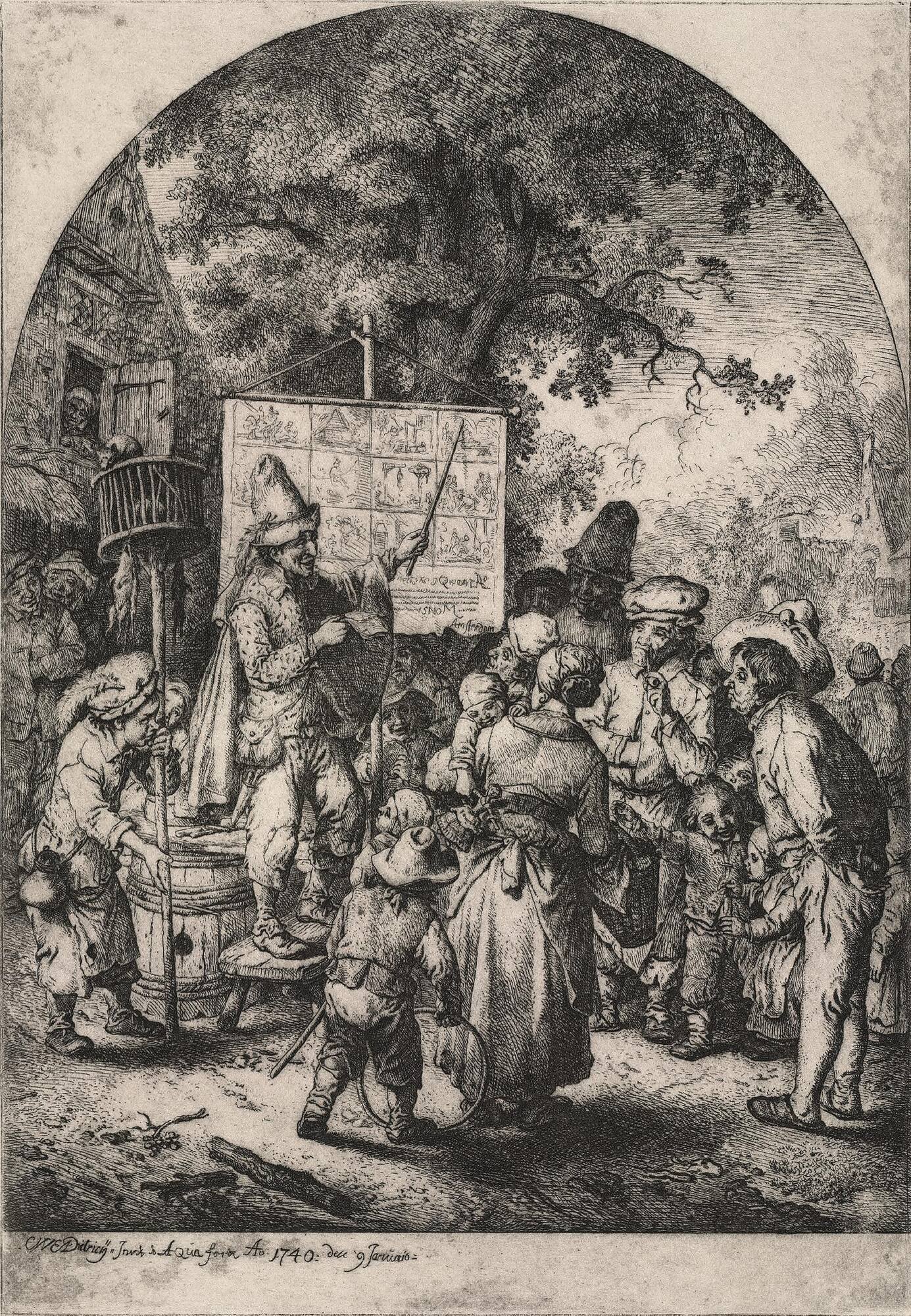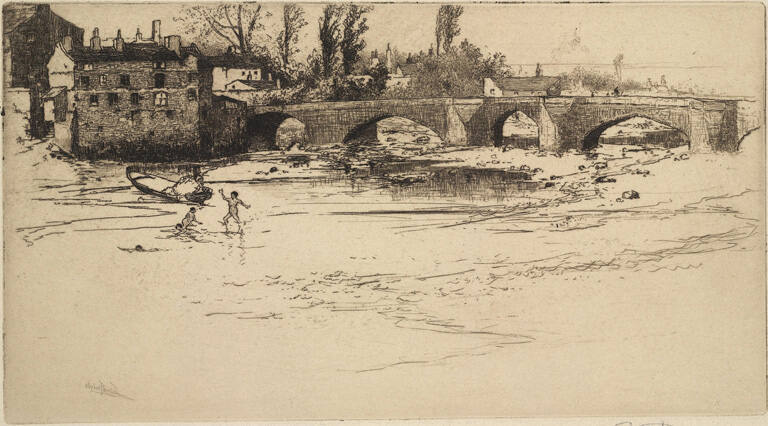Christian Wilhelm Ernst Dietrich
(German, 1712–1774)
Le Chanteur en Foire, dans le gout d’Ostade

Object Details
Artist
Christian Wilhelm Ernst Dietrich
Date
1740
Medium
Etching on heavy laid paper
Dimensions
Image: 10 3/4 x 7 1/2 inches (27.3 x 19.1 cm)
Credit Line
Gift of Gail A. Donson, Class of 1963
Object
Number
82.050.003
The copper plate that made this etching. is a survivor of the eighteenth century. Despite its age, a(…)
The copper plate that made this etching. is a survivor of the eighteenth century. Despite its age, and the fact that it has been handled multiple times, it could still produce a relatively clean image were it to be inked. However, where fingerprints have adhered to some areas, such as the blank space below the image, the ink would attach itself to hidden oils and produce a much muddier print than the original. (“Imprint/ In Print,” curated by Nancy E. Green with assistance from Christian Waibel ’17 and presented at the Johnson Museum August 8 – December 20, 2015)












